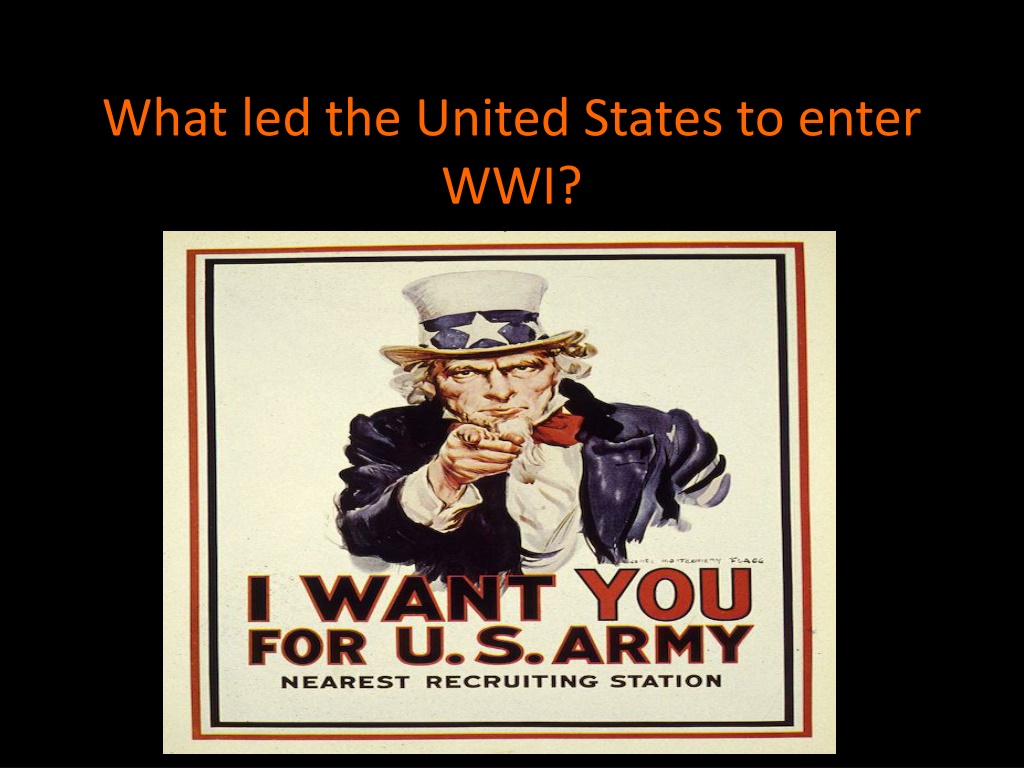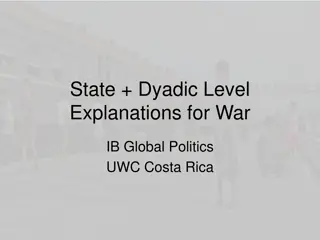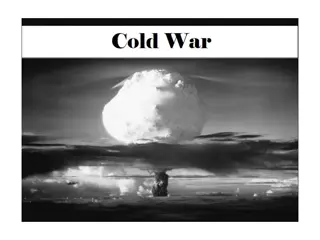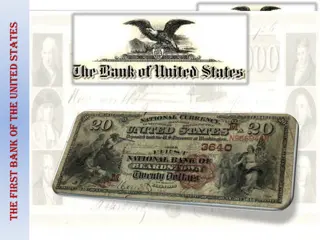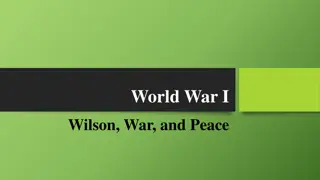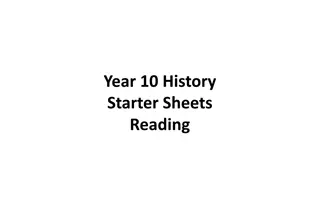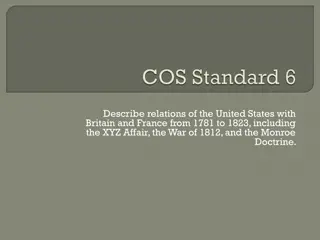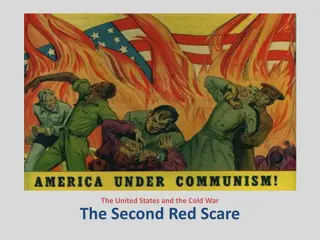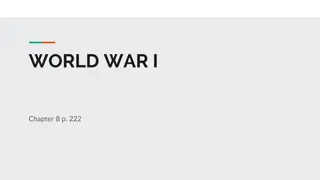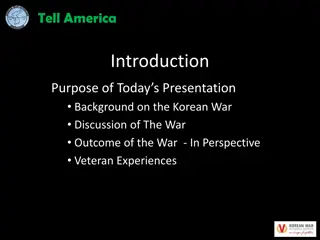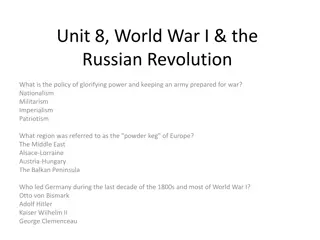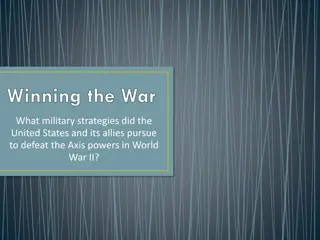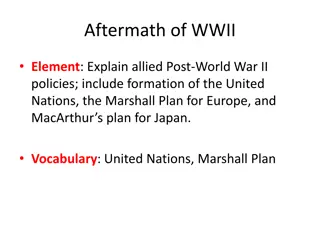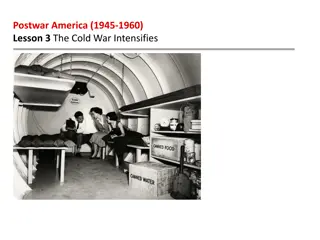Why the United States Entered World War I
The United States initially remained neutral during World War I, but various factors led to its eventual entry into the conflict. Growing anti-German sentiments, impact of the war on the American economy, incidents like the sinking of the Lusitania, and the revelation of the Zimmerman Telegram all played significant roles in pushing the United States towards war.
Download Presentation

Please find below an Image/Link to download the presentation.
The content on the website is provided AS IS for your information and personal use only. It may not be sold, licensed, or shared on other websites without obtaining consent from the author.If you encounter any issues during the download, it is possible that the publisher has removed the file from their server.
You are allowed to download the files provided on this website for personal or commercial use, subject to the condition that they are used lawfully. All files are the property of their respective owners.
The content on the website is provided AS IS for your information and personal use only. It may not be sold, licensed, or shared on other websites without obtaining consent from the author.
E N D
Presentation Transcript
The United States Remains Neutral When the war broke out the United States adopted an official position of neutrality Public opinion was divided across ethnic lines. Many Americans had ancestral ties to both the Allied and Central Powers Most Americans supported the Allies because of ties with England and France, while many German Americans favored the Central Powers. Many American Jews sided with the Central Powers because they had escaped the pogroms in Russia
Impact of the war on America The economy boomed! American farmers and manufacturers rushed to fill orders of war goods By 1917 trade with the Allies had grown seven times in value, but to a lesser degree with the Central Powers. Meaning, the United States was not strictly neutral
Impact of the war on America II Both sides waged a propaganda war in the United States. Propaganda is the spreading of ideas that help a cause or hurt an opposing cause.
Impact of the war on America III Anti- German feelings hardened when Germany interfered with what America saw as their freedom of the seas Germany used U-boats (submarines) to defend their blockade around British ports, sometimes firing on neutral American ships Germany fired on neutral ships out of fear that they were transporting war supplies to the Allied Powers On May 7, 1915 a German submarine torpedoed the Lusitania, a British passenger ship, off the coast of Ireland. Nearly 1,200 people died including 128 Americans. President Wilson threatened to break off diplomatic relations unless Germany ceased firing on American ships. They listened for the time being.
Moving towards war As a result of the British blockade, on February 1, 1917 Germany resumes unrestricted submarine warfare against neutral ships Germany knew this would pull the United States into war, but gambled they could defeat the Allies before American troops could reach Europe
Moving towards war II The Zimmerman Telegram In mid-February President Wilson learned that Germany s foreign secretary had sent a secret note to the German minister in Mexico urging Mexico to attack the United States if the United States declared war on Germany. In return Germany would help Mexico win back its lost territory in the American Southwest When Americans heard about the telegram anti-German feeling soared
Declaration of war On April 2, 1917 President Wilson went before congress to ask for a declaration of war. The world must be safe for democracy , he declared Congress voted for war 455 to 56 Among those who voted against war was Jannette Rankin- the first woman elected to congress On April 6, the President signed the declaration of war
Components of War Propaganda Demonizing the enemy Instilling guilt Playing on emotions Whipping up fear and hysteria Appealing to patriotic obligation Promising personal rewards or improvement
Bernice Smith was an energetic 20-year-old woman who stopped by her local California recruiting office and was very interested in signing up with the U.S. Navy. Upon seeing all of the young men enlisting in the Navy, Bernice suddenly blurted out the words, "Gee I wish I were a man, I'd join the Navy."
After two and a half years of neutrality, the United States entered World War I on April 6, 1917. James Montgomery Flagg, who created some of the war's most indelible images, sounded the alarm for all citizens in this poster. Actress Mary Arthur was Flagg's model for Columbia, who is a personification of America and Liberty. She is shown asleep, wearing patriotic stars and stripes and a Phrygian cap a symbol of freedom since Roman times. While she dozes against a fluted column, another visual reference to Western classical antiquity and civilization, sinister storm clouds gather in the background. (Source: Library of Congress exhibition caption)
For many men, however, awareness of their responsibilities towards their families as wage earners proved a compelling disincentive to volunteer. Often, the levels of compensation offered to the families of men who enlisted were not sufficient to avert the risk of destitution to wives and children or elderly parents. Posters like this used that powerful sense of duty to family, but instead suggested that, in the future, children would hold their fathers to account on the service that they performed for their country rather than the social protection that they ensured for their immediate family.
